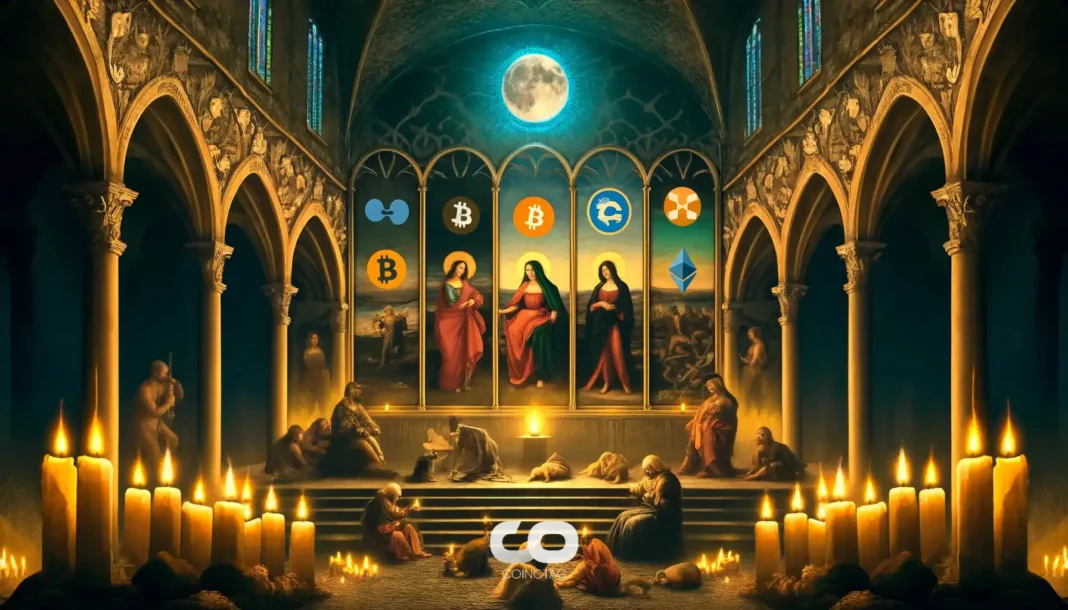Ethereum Foundation faces internal criticisms over centralized governance, as highlighted in a mid-2024 memo from lead Geth developer Péter Szilágyi, who accuses it of elite control and indirect influence by co-founder Vitalik Buterin, prompting Polygon CEO Sandeep Nailwal to voice similar frustrations in 2025.
-
Ethereum Foundation governance criticized for maintaining a ruling elite that resists decentralization.
-
Szilágyi’s memo points to Vitalik Buterin’s indirect control shaping project success and ecosystem norms.
-
Polygon’s Sandeep Nailwal echoes concerns, questioning loyalty and calling for community self-reflection amid ongoing Ethereum contributions.
Ethereum Foundation governance draws sharp criticisms from insiders like Péter Szilágyi and Sandeep Nailwal over centralization and control. Discover key issues and implications for ETH ecosystem in this 2025 analysis.
What Are the Key Criticisms of Ethereum Foundation Governance?
Ethereum Foundation governance has come under fire from longtime core developer Péter Szilágyi, who detailed concerns in a mid-2024 memo shared with Foundation leadership. He accuses the organization of fostering a “ruling elite” that refuses to relinquish control, despite Ethereum’s decentralized ethos. This centralized approach, Szilágyi argues, extends to project funding and ecosystem decisions, heavily influenced by co-founder Vitalik Buterin.
How Does Vitalik Buterin’s Influence Shape Ethereum’s Ecosystem?
Péter Szilágyi, who has led the Geth client development since 2015, emphasizes his respect for Vitalik Buterin but highlights the founder’s outsized role. Buterin’s attention, research directions, donations, and investments largely determine which projects thrive, according to the memo. With Geth holding about 41% of Ethereum node market share, Szilágyi’s perspective carries weight from his deep involvement in the network’s infrastructure.
Szilágyi notes that ecosystem permissions often hinge on Buterin’s opinions, particularly in gray areas. Projects seeking Foundation support must align with a small circle of influencers around Buterin—typically five to ten key individuals. This dynamic, he claims, creates a predictable path to success but undermines broader decentralization. For instance, external investments now favor the same recurring group of advisors and venture capitalists, straying from Ethereum’s original open strategy for public funding.
Supporting data from blockchain analytics shows Ethereum’s client diversity remains a concern; Geth’s dominance underscores the need for more distributed development. Experts like Szilágyi warn that such centralization risks stifling innovation, drawing parallels to early blockchain governance debates reported in industry analyses.
Frequently Asked Questions
What prompted Péter Szilágyi’s memo on Ethereum Foundation governance?
Péter Szilágyi’s mid-2024 memo stemmed from frustrations with the Ethereum Foundation’s centralized decision-making. As Geth lead, he criticized the “ruling elite” dynamic and Vitalik Buterin’s indirect control, arguing it hampers true decentralization despite Ethereum’s technical achievements.
Why is Sandeep Nailwal questioning his loyalty to Ethereum?
Sandeep Nailwal, Polygon CEO, expressed doubts after reading Szilágyi’s memo, tweeting on October 20, 2025, that he entered crypto for Ethereum’s vision. He highlighted frequent public criticisms from major contributors and urged the community to reflect, while noting his gratitude toward Vitalik Buterin.
Key Takeaways
- Centralized Control in Decentralization: Szilágyi’s memo reveals how a small elite, influenced by Vitalik Buterin, dictates Ethereum ecosystem success, challenging the network’s core principles.
- Impact on Projects and Investments: Foundation support and funding increasingly rely on a narrow group of influencers, leading to repetitive venture capital patterns and reduced public access.
- Community Reflection Needed: Nailwal’s intervention calls for Ethereum stakeholders to address governance flaws, potentially fostering reforms to enhance decentralization and contributor satisfaction.
Conclusion
The criticisms of Ethereum Foundation governance from Péter Szilágyi and Sandeep Nailwal underscore persistent tensions between centralization and decentralization in the Ethereum ecosystem. Szilágyi’s detailed memo exposes elite control mechanisms, while Nailwal’s response amplifies calls for introspection amid Polygon’s vital Layer-2 role. As Ethereum navigates these challenges in 2025, addressing such issues could strengthen its resilience and innovation potential—stay informed on evolving blockchain governance developments.







